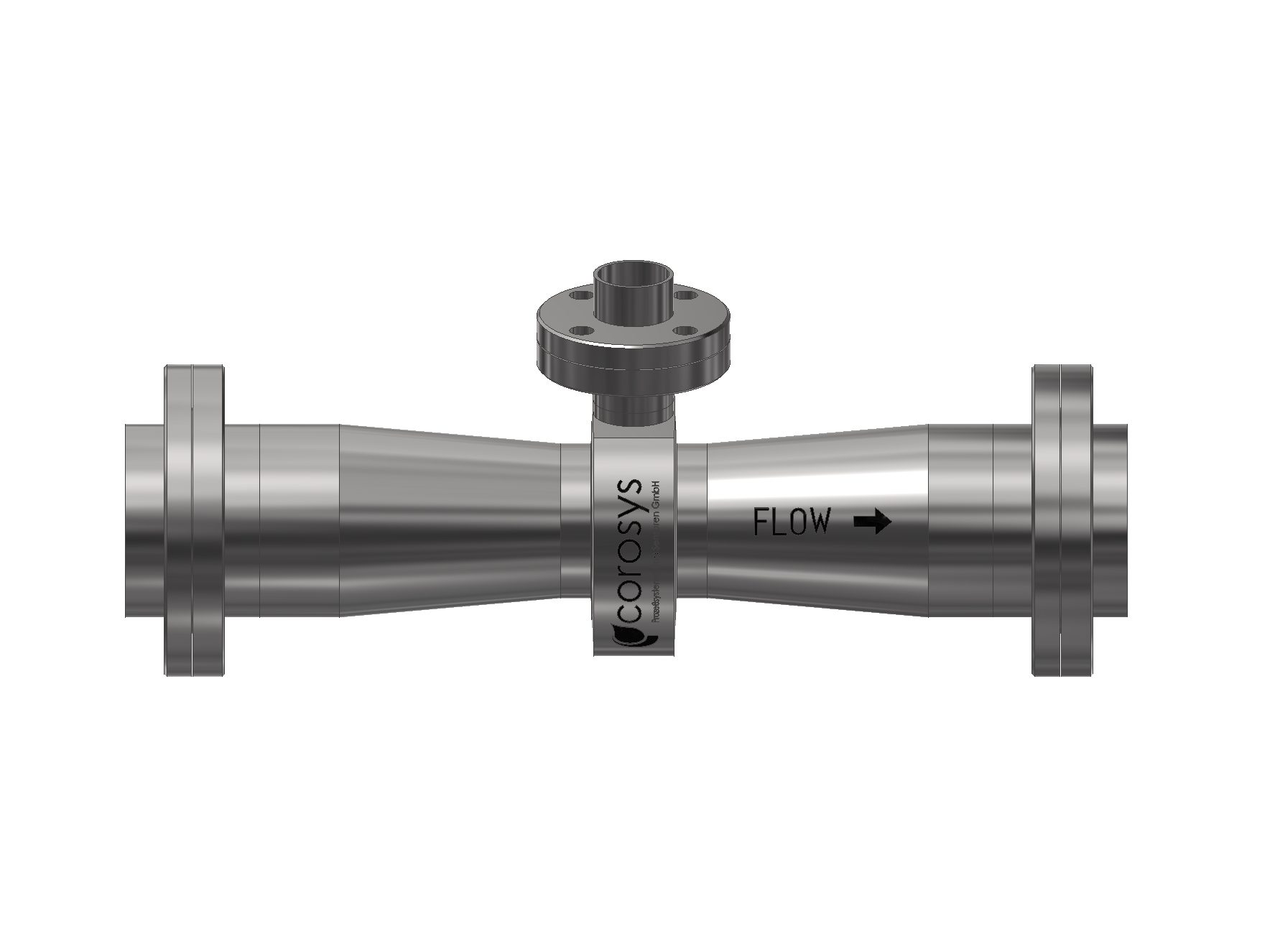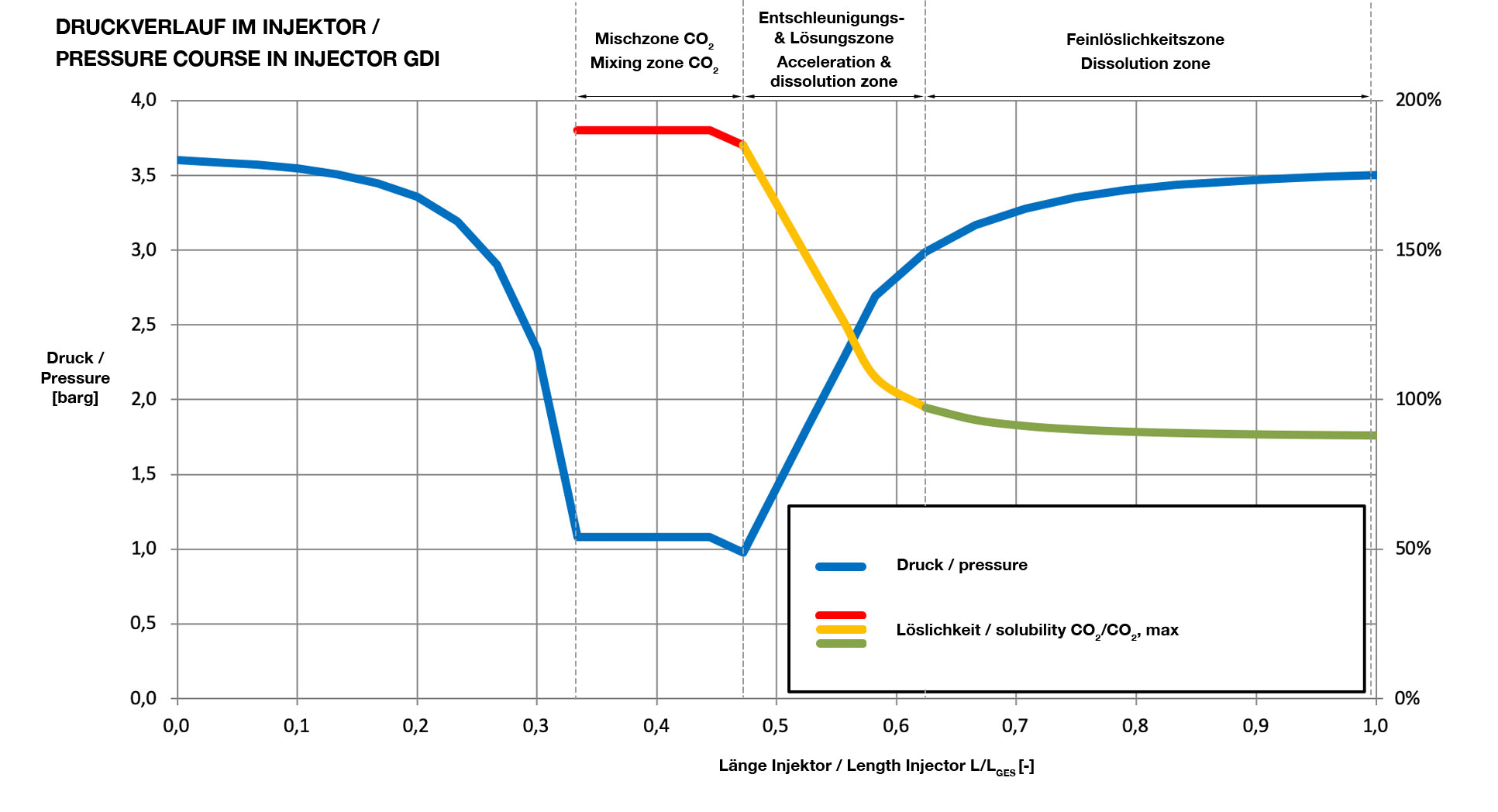Gas Dispersion Injector
 The corosys gas injector GDI has a large number of applications when a high disperse distribution and very efficient and rapid dissolution of gases in liquids is required, e.g. aeration of wort or carbonization of beer.
The corosys gas injector GDI has a large number of applications when a high disperse distribution and very efficient and rapid dissolution of gases in liquids is required, e.g. aeration of wort or carbonization of beer.
Its compact and maintenance free design in stainless steel or higher graded materials, the consequent sanitary design and the high efficiency for a wide range of throughputs makes it unique for the beverage, chemical and pharmaceutical industry.
For the optimized application of the injector corosys offers a comprehensive service for the customer starting from the support in customer specific design of the injector up to complete and automated package units around the injector, e.g. a carbonization unit.
Advantages and functions
Technical Description
The liquid flows longitudinally through the injector, while gas is added in a controlled manner through the laterally welded tube. The liquid is continuously accelerated in the injector and very uniformly mixed with the gas in a specially developed mixing chamber at the highest speed in a radial to axial transition. Accordingly, the pressure (shown in blue in the diagram) decreases in the direction of flow with a targeted strong drop for a very short area around the mixing zone. The resulting turbulences in the mixing zone ensure extremely good mixing even with difficult media and thus a very fine dispersion with uniform bubble distribution (red area of the solubility curve). Behind the mixing chamber, the generated gas-liquid fluid is continuously decelerated to the original liquid velocity and thus pressure (blue curve) and solubility (yellow curve) are rapidly increased. At the outlet of the injector the main part of the gas is already absorbed and the fine solubility zone begins (green curve), recognizable in a downstream sight glass as very small and finely distributed remaining gas bubbles.

The generation of the very small and regularly distributed gas bubbles results in an extremely high surface / volume ratio and thus a very rapid saturation and mass transfer. The specific advantage of the corosys GDI is the optimized vortex & cavitation mixing generating very small and narrow distributed bubbles while its flow design minimizes the pressure drop.
CIP/SIP: The CIP-procedure is done by high pumping the CIP-solution through the longitudinal injector tube. Parallel the gas inlet is cleaned with the CIP-solution through a bypass. We propose to sterilize with steam through the lateral nozzle (SIP). The sanitary design ensures long CIP-/SIP-free intervals.
Technical Specifications
| Application range | DNliq 2) DNgas 2) Length 2) Flow 1) 25 10 150 mm 30 hl/h 40 10 175 mm 70 hl/h 50 15 225 mm 150 hl/h 65 15 275 mm 300 hl/h 80 25 325 mm 400 hl/h 100 25 375 mm 700 hl/h 125 25 425 mm 1.100 hl/h 150 25 500 mm 1.600 hl/h 1) liquid flow rates, the gas flow & dissolution grade are specific designed 2) other diameters & dimensions on demand, length data without flange |
| Materials | 1.4301 or higher graded materials, e.g. alloys, titanium |
| Process connections | Welded ends or flanges according to customer specifications (DIN, ANSI, etc.) |


